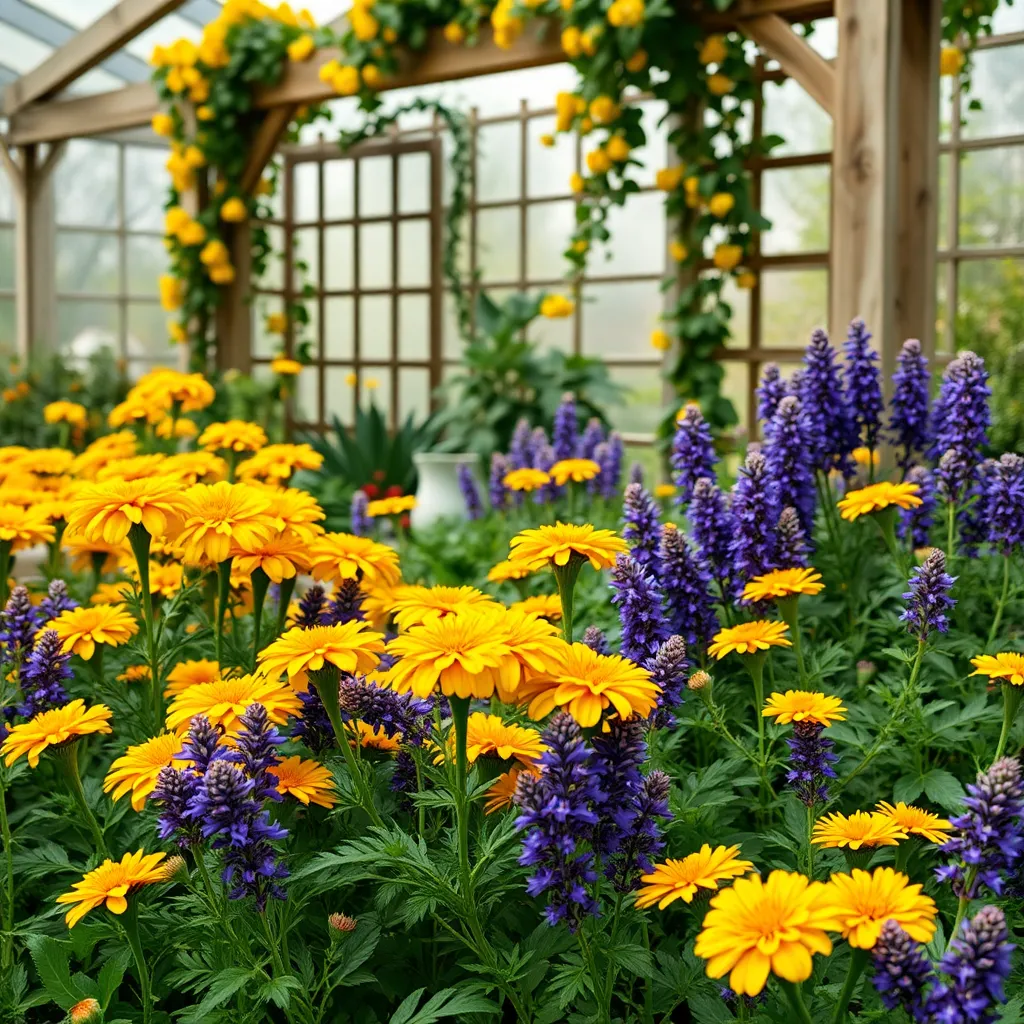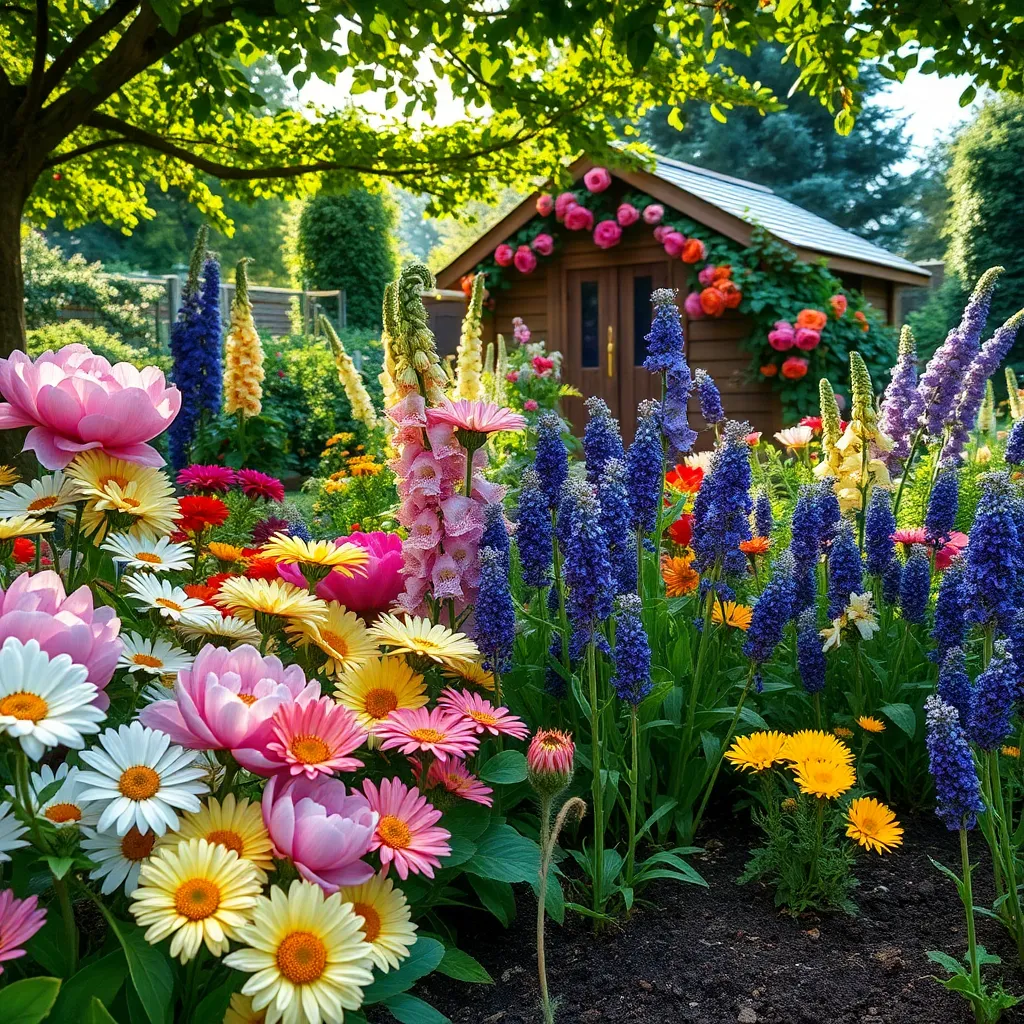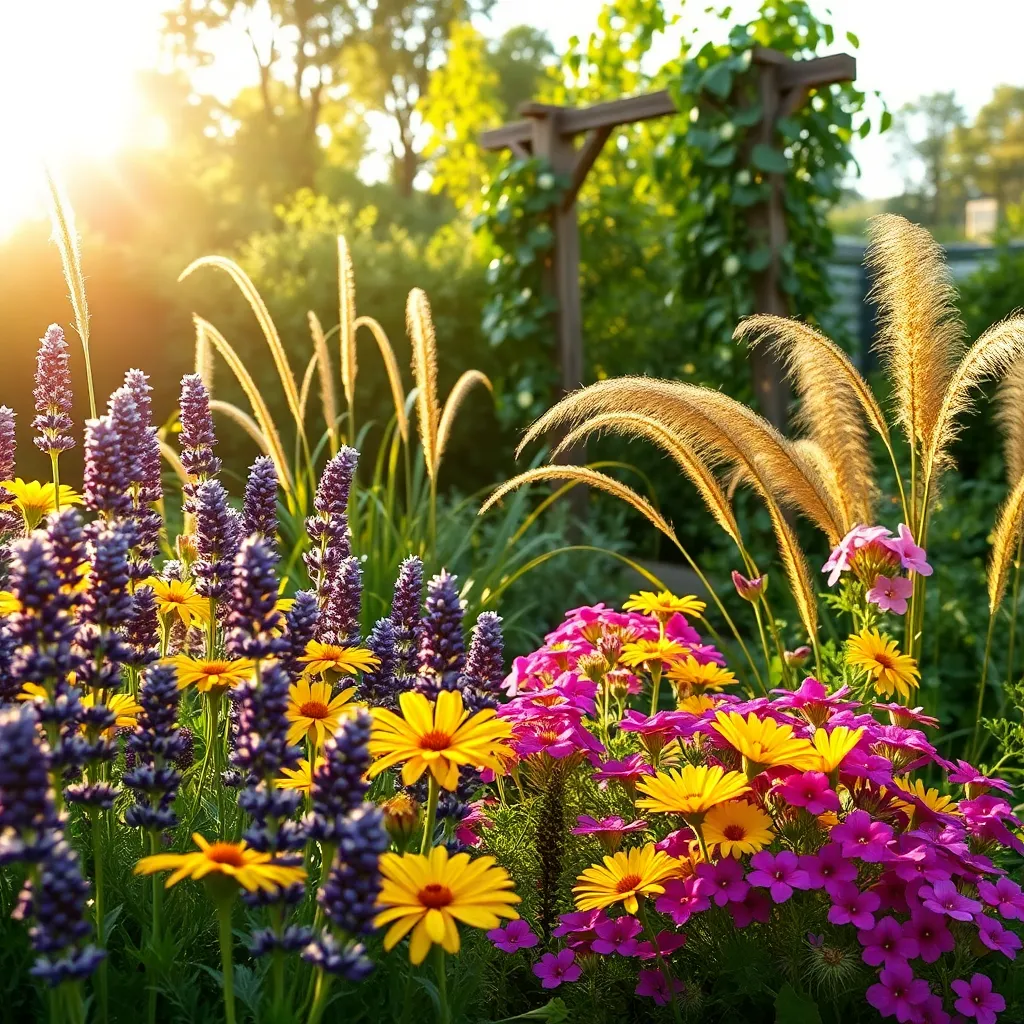In the tapestry of your garden, flowers are the vibrant threads that weave together beauty and life. Whether you’re planting your very first bed or refining an established landscape, the art of combining blossoms can transform any patch of soil into a breathtaking masterpiece. Understanding how different flowers can complement and enhance each other’s natural allure is a skill that elevates your garden from lovely to extraordinary.
For the budding gardener, creating stunning flower combinations might seem like a daunting task, but it is an exciting journey filled with discovery and creativity. Selecting the right blend of colors, textures, and heights not only cultivates a visual feast but also encourages a thriving ecosystem. Experienced gardeners, too, can find fresh inspiration in experimenting with new pairings that challenge and expand their horticultural horizons.
In this article, we will delve into the secrets of crafting remarkable flower combinations that captivate every sense. From bold contrasts to harmonious blends, you’ll discover techniques to balance and enhance the natural beauty of your garden. With our guidance, you’ll learn practical tips and insights that turn your gardening visions into reality, enriching your outdoor space with every bloom.
Color Harmony in Flower Beds

Creating color harmony in flower beds is both an art and a science. To achieve this, start by selecting plants that bloom in complementary colors, such as pairing blue lobelias with yellow marigolds.
For beginners, focusing on three or four colors can help maintain a cohesive look. Use a color wheel to identify which shades work well together; for example, purples and oranges create a vibrant contrast.
Soil quality plays a crucial role in color vibrancy, so ensure your garden bed has well-draining soil enriched with organic matter. A simple soil test can guide you in amending your soil with the right nutrients to enhance plant growth.
Advanced gardeners might consider the impact of light on color perception in flower beds. Planting light-colored blooms, like white petunias, in shady areas can make the space appear brighter and more inviting.
Perfect Pairings for Sun Gardens

Creating a sun garden offers an exciting opportunity to pair vibrant, sun-loving plants for a stunning display. Pair Lavender (Lavandula spp.) with Coreopsis (Coreopsis spp.) to enjoy a low-maintenance, drought-tolerant combination that thrives in well-drained soil.
When planning your sun garden, think about plant height to create layers of interest. Place Russian Sage (Perovskia atriplicifolia) behind shorter plants like Blanket Flower (Gaillardia spp.) to create a colorful backdrop that attracts pollinators.
Soil preparation is crucial to the success of your sun garden pairings. Choose a sandy or loamy soil mix to provide excellent drainage, ensuring your plants don’t sit in waterlogged conditions.
Watering is key, especially in the first few weeks after planting to help establish strong roots. Once established, these plants appreciate a deep watering every 7-10 days, allowing the soil to dry out between waterings.
Advanced gardeners might experiment with companion planting techniques to enhance growth and deter pests. For instance, planting Basil (Ocimum basilicum) near your sun-loving flowers can help repel aphids and improve overall plant health.
Shade-Loving Flower Duos

Transforming a shaded corner of your garden into a vibrant oasis can be as simple as pairing the right plants. For a beautiful duo that thrives in low light, consider combining Astilbe with Hostas, both of which love the cool, damp conditions found in shady areas.
Astilbes offer delicate, feathery plumes that add texture and color to your garden from late spring to summer. They prefer rich, well-drained soil and should be kept consistently moist, especially during their blooming period.
Hostas, known for their lush foliage, complement Astilbes perfectly with their wide variety of leaf shapes and colors. To keep Hostas thriving, ensure they are planted in soil that retains moisture but has good drainage, and protect them from slug damage using organic methods like crushed eggshells or coffee grounds.
If you’re looking to add a splash of color throughout the season, try combining Bleeding Hearts with Ferns. Bleeding Hearts bloom in early spring, offering heart-shaped flowers that hang delicately from arching stems, while Ferns provide a rich backdrop with their textured fronds.
Bleeding Hearts prefer cool, well-drained soil and appreciate regular watering to maintain soil moisture. After their spring bloom, cut back the foliage to encourage healthy growth and potential reblooming in the fall.
Ferns, on the other hand, thrive in consistently damp soil and are incredibly low maintenance once established. To ensure their lush growth, mulch around the plants to retain moisture and suppress weeds, making this duo an excellent choice for busy gardeners.
Seasonal Blooms for Year-Round Beauty

For a garden that delights throughout the year, plan your plantings to ensure continuous blooms from season to season. Start with early spring bulbs like daffodils and tulips, which are easy to plant in the fall and bring a burst of color as winter fades.
As spring transitions to summer, consider introducing perennial favorites such as daylilies and peonies. These plants are not only visually stunning but also require minimal maintenance once established, making them perfect for busy gardeners.
To keep your garden vibrant in the fall, plant asters and chrysanthemums, which thrive in the cooler temperatures and shorter days. Ensure they have well-drained soil and a sunny spot to keep them blooming until the first frost.
Winter gardens can be challenging, but incorporating evergreens and winter-blooming plants like hellebores can add structure and color. For those in milder climates, camellias offer lovely blooms during the colder months and require little more than regular watering and slightly acidic soil.
Fragrance and Texture Combinations

Combining fragrance and texture in your garden not only enhances visual appeal but also enriches the sensory experience. For an inviting garden, consider pairing the velvety leaves of lamb’s ear (Stachys byzantina) with the sweet aroma of lavender (Lavandula).
To maintain these plants, ensure lamb’s ear receives full sun to partial shade and thrives in well-drained soil. Lavender prefers similar conditions—full sun and well-drained, slightly alkaline soil—making them a compatible duo.
Planting fragrant sweet alyssum (Lobularia maritima) alongside the feathery texture of yarrow (Achillea millefolium) creates a delightful contrast. Sweet alyssum’s honey-like scent is most potent in the evening, while yarrow’s hardy nature provides structural interest.
Both sweet alyssum and yarrow are drought-tolerant, requiring moderate watering once established. For best results, amend the soil with organic matter before planting and deadhead regularly to promote continuous blooms.
Garden enthusiasts seeking a more exotic combination might try the spicy scent of dianthus (Dianthus spp.) paired with the coarse leaves of Russian sage (Perovskia atriplicifolia). This pairing offers not only diverse textures but also a prolonged blooming season.
Dianthus thrives in well-drained soil and full sun, requiring regular watering to keep the soil moist but not waterlogged. Russian sage, on the other hand, is more tolerant of dry conditions, so planting both together in a mixed border can balance their needs.
Conclusion: Growing Success with These Plants
As we explored the stunning garden flower combos, we discovered five key relationship concepts that can transform any partnership. First, the importance of diversity reminds us that variety brings vibrancy to relationships, much like a garden’s array of blooms. Second, the concept of balance teaches us to harmonize differing personalities, ensuring every individual shines in their own right. Third, nurturing growth emphasizes the need for continuous care and attention, allowing love to flourish. Fourth, seasonal adaptation encourages us to embrace change, understanding that relationships, like gardens, evolve over time. Finally, resilience in adversity shows us the strength found in weathering life’s storms together.
To put these insights into practice, take a moment to discuss with your partner how each of these concepts can be woven into the fabric of your relationship. Make it an enriching dialogue that plants seeds for future growth.
Remember to save this article for future reference; it’s a blooming guide to nurturing your relationship through every season. As you look ahead, envision a partnership that thrives with the beauty and resilience of the most stunning garden. Embrace these concepts, and watch your relationship blossom like never before.
